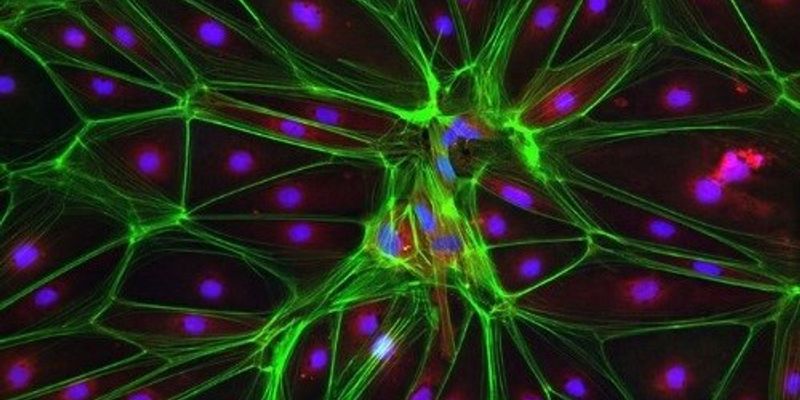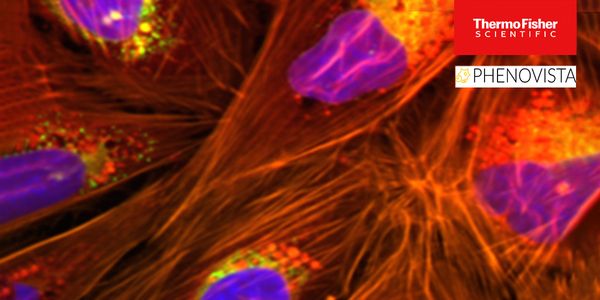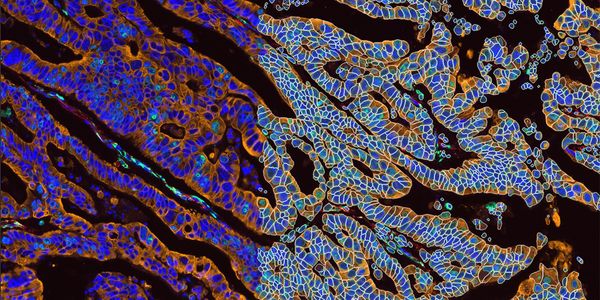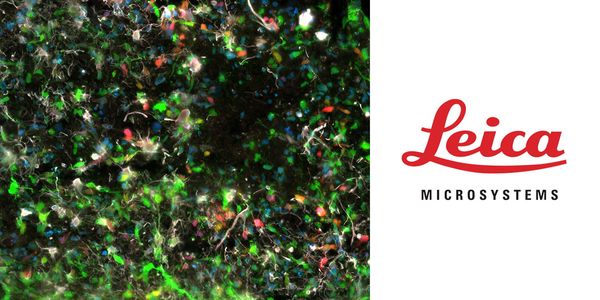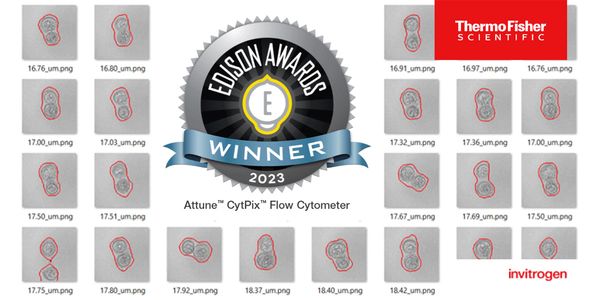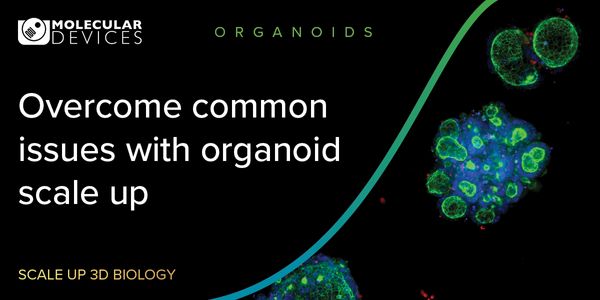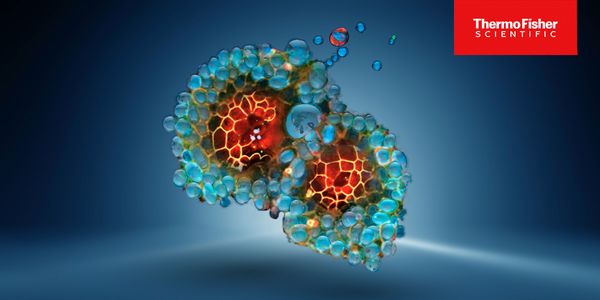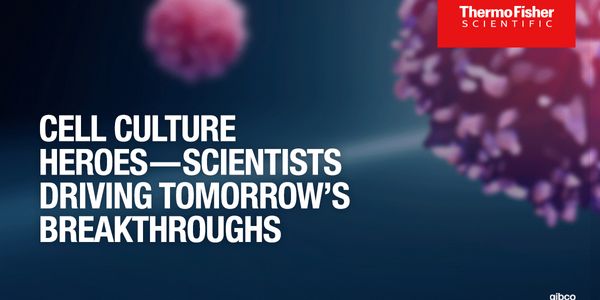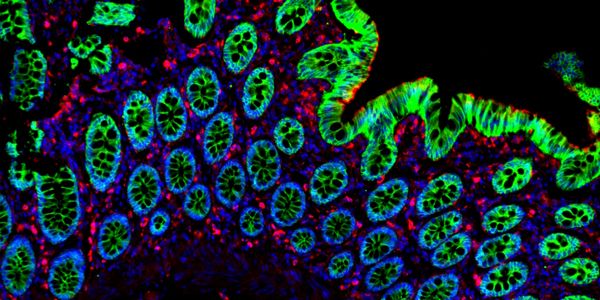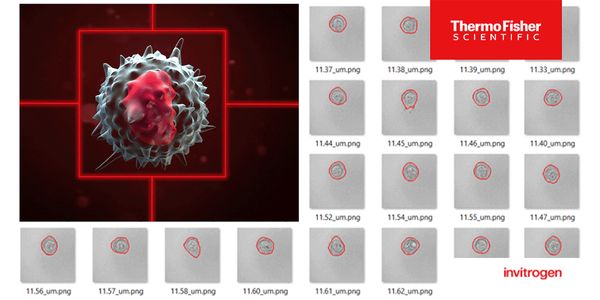Cell Imaging
Cell imaging: encloses the techniques that allow the detection and analysis of cellular organelles and macromolecules. Live cell imaging was pioneered in the first decade of the 20th century, and is used by scientists to obtain a better understanding of biological function through the study of cellular dynamics.
-
APR 08, 2025 | 8:00 AMFluorescence imaging offers robust, multi-parametric and scalable analysis of celllevel activity in heterogenous populations with excellent spatial and temporal resolution. This seminar will...APR 02, 2024 | 8:00 AMCirculating tumor cells (CTCs) and circulating tumor DNA (ctDNA) have each gained attention as promising liquid biopsy markers, offering molecular insights into cancer progression, overall s...Across many cancers, mortality is associated with metastasis and acquired drug resistance, both of which often manifest in recurrent disease. Central to these phenomena is epithelial to mese...
FEB 08, 2024 | 10:00 AM
High-content screening (HCS) is an imaging-based, multi-parametric strategy used in drug development that generates rich datasets through multiplexing strategically chosen fluorescent dyes a...
JAN 23, 2024 | 10:00 AM
Organoid technologies are increasingly being used as in vitro models of human development and disease because they exhibit morphogenetic, structural and functional properties that recapitula...
Speaker:
Kalpana Barnes
NOV 29, 2023 | 10:00 AM
High content screening at speed requires compromise: sacrificing resolution, sample coverage or both. This has limited high content screening’s utility as a high throughput tool. In or...
Spheroids and organoids, two examples of 3D cell culture models, have become invaluable tools to study the processes that dictate behavior of tissues under physiological and pathological con...
NOV 08, 2023 | 8:00 AM
Generating Insights into tissue microenvironments is crucial to our understanding of normal and abnormal tissue development such as during cancer progression. Spatial biology methods using m...
OCT 31, 2023 | 9:00 AM
Gene therapy holds potential for treating neurological diseases by delivering genetic information into specific cell types. However, selective and efficient targeting of cell types remains c...
OCT 25, 2023 | 8:30 PM
The CytPix is a flow cytometer that can simultaneously collect fluorescence data and high-resolution brightfield images of individual cells. This allows to better understand the morphology o...
OCT 25, 2023 | 10:00 AM
Oxidative stress, a critical factor affecting cell health, has gained prominence in assessing various medical conditions. Given this importance, researchers need a wide range of tools to tho...
Speaker:
Daniel Sem, Ph.D., MBA, JD
, Roxanne Alvarez, Ph.D.
Sponsored By: BrainXell,
Vivid Microscopy
OCT 25, 2023 | 8:00 AM
The CytPix is a flow cytometer that can simultaneously collect fluorescence data and high-resolution brightfield images of individual cells. This allows to better understand the morphology o...
OCT 24, 2023 | 8:00 AM
Organoids are three-dimensional (3D) multi-cellular, microtissues derived from stem cells that closely mimic the complex structure and functionality of human organs. They offer more accurate...
OCT 24, 2023 | 10:00 AM
Organoids are three-dimensional (3D) multi-cellular, microtissues derived from stem cells that closely mimic the complex structure and functionality of human organs. They offer more accurate...
OCT 12, 2023 | 8:00 AM
Patient-derived tumoroids, also known as cancer organoids, hold potential as cost-effective models for cancer immunotherapy research. Patient-derived tumor models, which mimic the tumor micr...
SEP 28, 2023 | 8:00 AM
Are you studying complex biological structures such as vasculatures or neuronal networks but feel like you're not seeing the whole picture? Step into a new dimension with the UltraMicros...
SEP 28, 2023 | 7:00 AM
Webinars will be available for unlimited on-demand viewing after live event. Labroots is approved as a provider of continuing education programs in the clinical laboratory sciences by the AS...
SEP 13, 2023 | 9:00 AM
CRISPR-based forward genetic screens can be used to identify essential genes in proliferating human cell lines. Although environmental factors also influence gene essentiality, most CRISPR-b...
SEP 12, 2023 | 9:00 AM
In recent years, significant progress has been made in tissue-based technology, opening up unparalleled opportunities for identifying disease process biomarkers and gaining invaluable insigh...
Malaria is a life-threatening disease that is caused by unicellular eukaryotic parasites of the genus Plasmodium, with P. falciparum being responsible for the most severe form of human malar...
AUG 29, 2023 | 7:00 AM
Spatialomics leverages multiplex imaging to achieve translational profiling of tissue specimens by assessing the relative spatial orientations of biological structures with RNA and protein e...
Speaker:
Dr. Leticia Montoya, Ph.D., Chemistry and Biochemistry
Sponsored By: Thermo Fisher Scientific
JUL 26, 2023 | 8:30 PM
Differences in how users gate populations within experiments are major sources of variability in flow cytometry data analysis. Incorporating automated image analysis can substantially reduce...
The use of adeno-associated viruses (AAV) as gene delivery vectors has vast potential for the treatment of many severe human diseases. A small group of intensively studied AAV capsids have b...
Genetically modified cell models accelerate the development of safe and effective therapeutics, making them indispensable in the quest for new drugs. Through manipulation of cell line geneti...
APR 08, 2025 | 8:00 AM
Fluorescence imaging offers robust, multi-parametric and scalable analysis of celllevel activity in heterogenous populations with excellent spatial and temporal resolution. This seminar will...
APR 02, 2024 | 8:00 AM
Circulating tumor cells (CTCs) and circulating tumor DNA (ctDNA) have each gained attention as promising liquid biopsy markers, offering molecular insights into cancer progression, overall s...
Across many cancers, mortality is associated with metastasis and acquired drug resistance, both of which often manifest in recurrent disease. Central to these phenomena is epithelial to mese...
FEB 08, 2024 | 10:00 AM
High-content screening (HCS) is an imaging-based, multi-parametric strategy used in drug development that generates rich datasets through multiplexing strategically chosen fluorescent dyes a...
JAN 23, 2024 | 10:00 AM
Organoid technologies are increasingly being used as in vitro models of human development and disease because they exhibit morphogenetic, structural and functional properties that recapitula...
Speaker:
Kalpana Barnes
NOV 29, 2023 | 10:00 AM
High content screening at speed requires compromise: sacrificing resolution, sample coverage or both. This has limited high content screening’s utility as a high throughput tool. In or...
Spheroids and organoids, two examples of 3D cell culture models, have become invaluable tools to study the processes that dictate behavior of tissues under physiological and pathological con...
NOV 08, 2023 | 8:00 AM
Generating Insights into tissue microenvironments is crucial to our understanding of normal and abnormal tissue development such as during cancer progression. Spatial biology methods using m...
OCT 31, 2023 | 9:00 AM
Gene therapy holds potential for treating neurological diseases by delivering genetic information into specific cell types. However, selective and efficient targeting of cell types remains c...
OCT 25, 2023 | 8:30 PM
The CytPix is a flow cytometer that can simultaneously collect fluorescence data and high-resolution brightfield images of individual cells. This allows to better understand the morphology o...
OCT 25, 2023 | 10:00 AM
Oxidative stress, a critical factor affecting cell health, has gained prominence in assessing various medical conditions. Given this importance, researchers need a wide range of tools to tho...
Speaker:
Daniel Sem, Ph.D., MBA, JD
, Roxanne Alvarez, Ph.D.
Sponsored By: BrainXell,
Vivid Microscopy
OCT 25, 2023 | 8:00 AM
The CytPix is a flow cytometer that can simultaneously collect fluorescence data and high-resolution brightfield images of individual cells. This allows to better understand the morphology o...
OCT 24, 2023 | 8:00 AM
Organoids are three-dimensional (3D) multi-cellular, microtissues derived from stem cells that closely mimic the complex structure and functionality of human organs. They offer more accurate...
OCT 24, 2023 | 10:00 AM
Organoids are three-dimensional (3D) multi-cellular, microtissues derived from stem cells that closely mimic the complex structure and functionality of human organs. They offer more accurate...
OCT 12, 2023 | 8:00 AM
Patient-derived tumoroids, also known as cancer organoids, hold potential as cost-effective models for cancer immunotherapy research. Patient-derived tumor models, which mimic the tumor micr...
SEP 28, 2023 | 8:00 AM
Are you studying complex biological structures such as vasculatures or neuronal networks but feel like you're not seeing the whole picture? Step into a new dimension with the UltraMicros...
SEP 28, 2023 | 7:00 AM
Webinars will be available for unlimited on-demand viewing after live event. Labroots is approved as a provider of continuing education programs in the clinical laboratory sciences by the AS...
SEP 13, 2023 | 9:00 AM
CRISPR-based forward genetic screens can be used to identify essential genes in proliferating human cell lines. Although environmental factors also influence gene essentiality, most CRISPR-b...
SEP 12, 2023 | 9:00 AM
In recent years, significant progress has been made in tissue-based technology, opening up unparalleled opportunities for identifying disease process biomarkers and gaining invaluable insigh...
Malaria is a life-threatening disease that is caused by unicellular eukaryotic parasites of the genus Plasmodium, with P. falciparum being responsible for the most severe form of human malar...
AUG 29, 2023 | 7:00 AM
Spatialomics leverages multiplex imaging to achieve translational profiling of tissue specimens by assessing the relative spatial orientations of biological structures with RNA and protein e...
Speaker:
Dr. Leticia Montoya, Ph.D., Chemistry and Biochemistry
Sponsored By: Thermo Fisher Scientific
JUL 26, 2023 | 8:30 PM
Differences in how users gate populations within experiments are major sources of variability in flow cytometry data analysis. Incorporating automated image analysis can substantially reduce...
The use of adeno-associated viruses (AAV) as gene delivery vectors has vast potential for the treatment of many severe human diseases. A small group of intensively studied AAV capsids have b...
Genetically modified cell models accelerate the development of safe and effective therapeutics, making them indispensable in the quest for new drugs. Through manipulation of cell line geneti...
